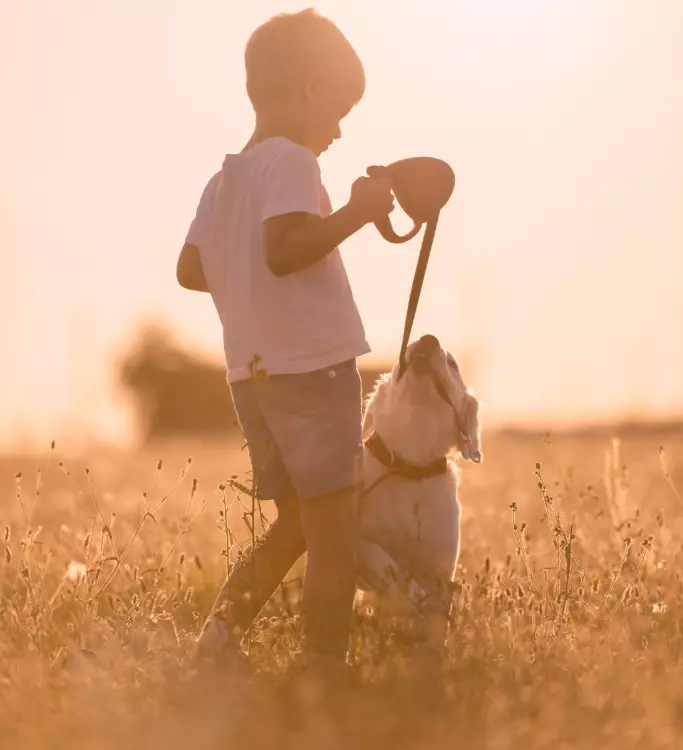Positive Reinforcement: Training and Behavior
Discover the power of positive reinforcement training to unlock your dog’s true potential. This blog post will guide you through the process, providing valuable tips and insights.
As an experienced dog trainer and owner, I have witnessed firsthand the transformative power of positive reinforcement training. Growing up, I had a mischievous and unruly dog named Coby. He was always getting into trouble and it seemed like no amount of scolding or punishment could change his behavior. It wasn’t until I discovered the magic of positive reinforcement that everything changed.

I started using treats and praise to reward him for good behavior, and I was amazed at how quickly he responded. Coby became a well-behaved and happy companion, and our bond grew stronger than ever. This personal experience is what qualifies me to write this article and share the incredible benefits of positive reinforcement training with my readers. I understand the struggles and frustrations that come with training a dog, and I am here to guide and support you every step of the way.
Understanding Positive Reinforcement Training
Understanding positive reinforcement training is essential for successful dog training and behavior modification. Positive reinforcement involves rewarding your dog for desired behaviors, which increases the likelihood of those behaviors being repeated in the future.
Unlike punishment-based training methods, positive reinforcement focuses on rewarding and reinforcing good behaviors rather than punishing bad behaviors. This approach is more effective and can work with even the most stubborn dogs. This has been proven in multiple research studies such as these two linked here and here.
Positive reinforcement training is based on the principles of operant conditioning. It relies on the use of rewards, such as treats, toys, or praise, to positively reinforce behaviors. When your dog performs a desired behavior, you immediately reward them, which strengthens the association between the behavior and the reward.
By understanding the principles of positive reinforcement training, you can effectively communicate with your dog and shape their behavior in a positive way. It’s a humane and effective training method that brings out the best in your dog.
Choosing the Right Rewards
Choosing the right rewards is an essential part of positive reinforcement training for your dog. It’s important to find out what motivates your dog the most, whether it’s treats, toys, or praise. By using rewards that your dog finds valuable, you can reinforce positive behaviors and encourage them to repeat those behaviors in the future. Remember to vary the rewards to keep your dog engaged and motivated.
Another important aspect of choosing the right rewards is timing. It’s crucial to deliver the reward immediately after your dog performs the desired behavior. This helps your dog associate the behavior with the reward and reinforces the connection. Be consistent with your rewards and use them as a tool to communicate with your dog.
Creating a Positive Environment
Creating a positive environment is key to successful positive reinforcement training. Your dog should feel safe, comfortable, and happy in their environment. Eliminate any potential sources of fear or stress, such as loud noises or chaotic surroundings. Provide your dog with a designated space where they can relax and feel secure.
In addition to the physical environment, it’s important to create a positive emotional atmosphere. Show your dog love, patience, and understanding. Use positive body language and vocal cues to communicate with your dog. Avoid punishment-based training methods, as they can create fear and anxiety in your dog. Instead, focus on rewarding and reinforcing positive behaviors.
Teaching Basic Commands
Teaching basic commands is an essential part of positive reinforcement training. Start with simple commands like ‘sit,’ ‘stay,’ ‘come,’ ‘shake paw,’ and ‘roll over‘ then move onto more advance moves like “bark” or “growl“. Use positive reinforcement techniques such as treats, praise, and petting to reward your dog when they successfully perform the command.
Break down the training into small, manageable steps. Repeat the commands regularly and be patient with your dog. Consistency is key, so make sure to use the same cues and rewards each time. Gradually increase the difficulty of the commands as your dog becomes more proficient.
Remember to keep training sessions short and fun. End each session on a positive note, even if your dog hasn’t fully mastered the command. Celebrate their progress and always reward their efforts.
Addressing Behavioral Issues
Addressing behavioral issues is an important aspect of positive reinforcement training. Instead of punishing your dog for unwanted behaviors, focus on redirecting and teaching alternative behaviors. Identify the underlying cause of the behavior and address it accordingly.
For example, if your dog is exhibiting destructive chewing behavior, provide them with appropriate chew toys and redirect their attention to those toys whenever they start chewing on something they shouldn’t. Reward them when they choose to chew on the appropriate items. Some behaviors to address could be excessive barking, aggression towards cats, etc.
Consistency and patience are key when addressing behavioral issues. It may take time for your dog to unlearn unwanted behaviors and replace them with positive ones. Seek professional help if needed, especially for more complex behavioral issues.
Conclusion
Positive reinforcement training is a powerful tool for unlocking your dog’s true potential. By using rewards, creating a positive environment, teaching basic commands, and addressing behavioral issues, you can establish a strong bond with your dog and help them become well-behaved and happy companions.
Remember to be patient, consistent, and always focus on rewarding and reinforcing positive behaviors. Your dog will thrive in a positive training environment, and you’ll both enjoy the journey of training and learning together.
